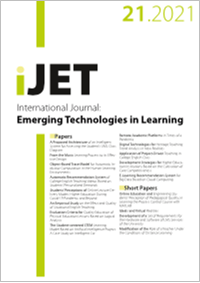Digital Technologies for Heritage Teaching: Trend Analysis in New Realities
DOI:
https://doi.org/10.3991/ijet.v16i21.25149Keywords:
heritage, heritage education, digital technologies, ICT, heritage teachingAbstract
The irruption of digital technologies in social contexts and their integration in educa-tion has led to new learning environments where the communication, interaction and access to knowledge are an essential part of the educational process. This paper shows a literature review and mapping of the most important technological tools used in the contexts where heritage teaching has been conducted in the last decade. For this aim developed a bibliometric analysis of scientific publications in high impact journals through selective searches in the specialized databases Scopus and Science Direct. The findings show trends in the educational practice approach regarding herit-age, integrating emerging technologies such as augmented reality, 3D modelling, arti-ficial intelligence, QR coding and virtual reality that offer situated and immersive learning experiences on mobile apps and web-based platforms. From the studies analyzed in different contexts, it is concluded that the integration of digital technolo-gies in the teaching and heritage appropriation is a field that in recent years shows a clear increase, so that it is necessary to consider the potential of these tools in it’s diffusion, teaching and preservation to strengthen existing work lines and open up possibilities to future studies.
Downloads
Published
2021-11-15
How to Cite
Vargas Arteaga, J., Gravini-Donado, M. L., & Zanello Riva, L. D. (2021). Digital Technologies for Heritage Teaching: Trend Analysis in New Realities. International Journal of Emerging Technologies in Learning (iJET), 16(21), pp. 132–148. https://doi.org/10.3991/ijet.v16i21.25149
Issue
Section
Papers



